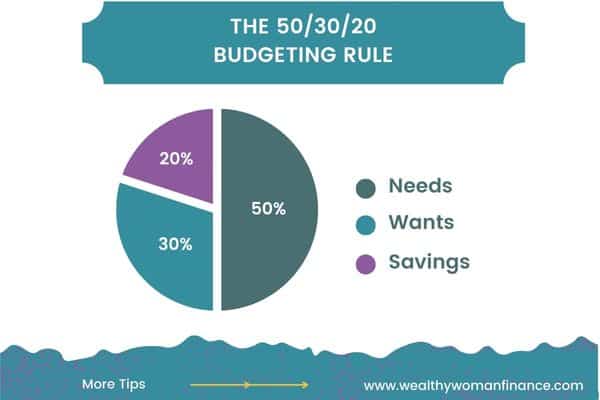Budgeting is a great way to manage your finances and get a clearer understanding of where your money is going each month. Whether you want to save for retirement, pay off debts, or just spend less, a budget is an essential tool for financial freedom.
A 70/20/10 rule is a percentage-based budgeting method that divides your income into three categories: spending, saving, and giving. It’s a great option for those who want to put a larger percentage of their income toward savings and other financial goals but don’t need the rigidity of a 30+-category budget.
70% for Living Expenses
The 70% rule for budgeting is a popular way to organize your money. It’s easy to follow, and can help you control spending, pay off debt, and save for the future.
To get started, calculate your monthly income (your net take-home pay, after tax) and subtract living expenses. This includes rent, bills, groceries, transportation, childcare costs, and other necessary expenses that keep you afloat each month.
For example, if you have a mortgage, your monthly living expense would be around 70% of your income.
This percentage doesn’t have to be 100%, but it should be close enough that you can live comfortably and still save a chunk for emergencies. It also doesn’t have to be as restrictive as some other budgeting methods, so it’s great for people who want to make savings a priority without worrying about whether they’re contributing enough to their emergency fund or paying off debt.
20% for Savings
You should aim to save 20% of your take-home pay each month. This is a good start, but this percentage could vary depending on your goals and financial situation.
The first step is to figure out how much you spend on living expenses every month, then put it on a spreadsheet. This will give you a clear picture of where your money is going each month, and you can adjust your budget accordingly.
The second step is to allocate 20% of your budget toward saving for future emergencies, investments and debt payments. This includes setting up a contingency fund and sinking funds, which are savings you can dip into in the event of unexpected expenses. It also includes putting a little bit of your savings toward retirement.
10% for Debt
The 10% rule for budgeting debt is a simple and effective tool to help you plan for any consumer debt that might be coming your way. It is particularly helpful if you are planning for a new car loan or other major financial purchase.
It also helps you prioritize your spending, limiting unnecessary purchases that can lead to added debt or more trouble managing your finances in the future.
However, it is important to note that the 10% rule does not apply equally well to every financial situation. If you have a large balance on your student loans for example, you may need to make some adjustments.
For most people, living expenses should come out of your 70% budget, while extra payments to pay off debt should come out of your 10%. Dedicating extra funds to paying off debt is a great strategy to get out of debt faster, especially when you use a debt snowball spreadsheet.
10% for Fun
A hefty dose of credit card debt can spell doom, especially for those of us on a budget. Having a solid debt reduction plan in place is the best way to avoid bankruptcy and the likes. But that means you need to be mindful of all aspects of your financial life, from budgeting your hard-earned cash to avoiding your credit card at all costs. The best way to do that is to create a budget and stick to it. Your budget should be broken down into the following categories: living expenses, savings, and debt. The best way to do this is to create a detailed monthly spending and tracking spreadsheet. This will allow you to keep tabs on your spending and see what areas of your budget you can trim without compromising your goals and dreams.

